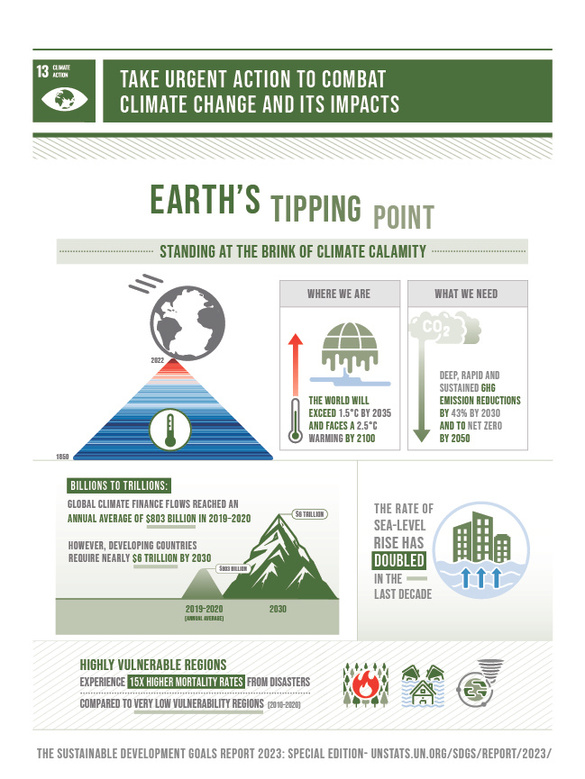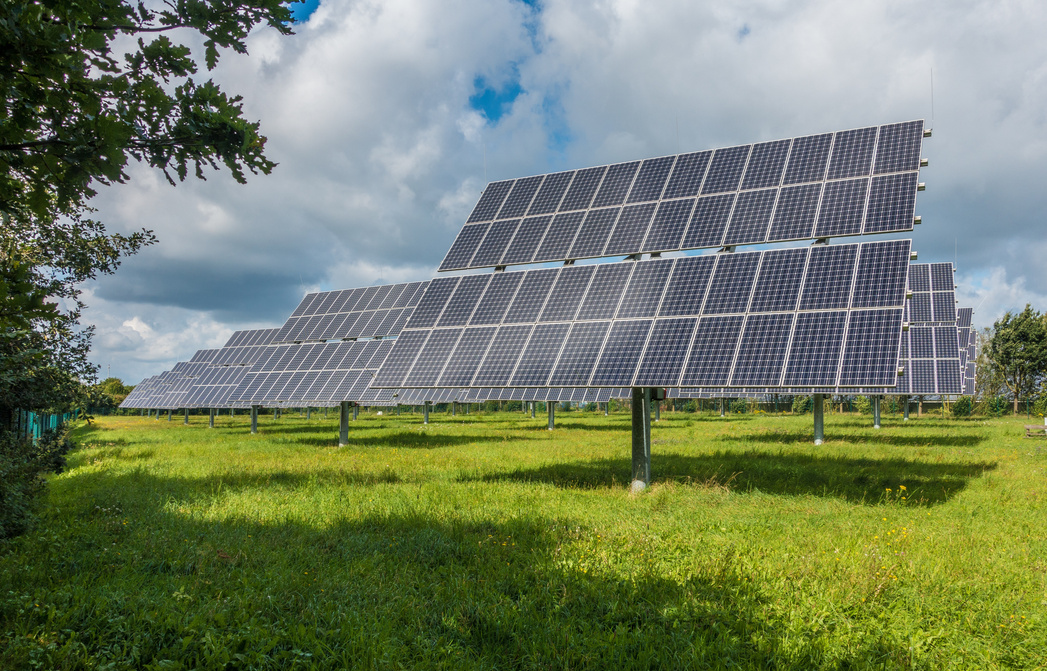we are creating A Better world
Together for Tomorrow: Our Journey to a Sustainable Climate
Our aim: Emapowering individuals and communities to take urgent and informed action against climate change, our website serves as a dynamic hub for education, engagement, and collaboration, driving forward the mission of Sustainable Development Goal 13.
What is SDG 13:
Sustainable Development Goal 13 (SDG13) is a global call to action embedded within the United Nations' broader framework of 17 Sustainable Development Goals (SDGs) aimed at addressing the world's most pressing challenges by 2030. Specifically, SDG13 targets urgent action to combat climate change and its impacts, acknowledging the existential threat that climate change poses to our ecosystems, economies, and societies (UN, 2024).
Revolution of Climate Change
2015 Paris Agreement
A Global Commitment
The landmark Paris Agreement in 2015, under the UNFCCC, was a critical step forward, with 196 countries committing to limit global warming to well below 2, preferably to 1.5 degrees Celsius, compared to pre-industrial levels.
Early 21st Century
Accelerating Impacts and Agreements
The early 2000s witnessed more intense scientific focus and public recognition of climate change, with the IPCC's 2001 and subsequent reports highlighting the increasing certainty and severity of the impacts.
Mid- and Late-20th Century
Early Warnings and Research
Scientists increasingly linked human activities, particularly the burning of fossil fuels, with potential global warming, leading to the first major conference on climate change, organized by the World Meteorological Organization (WMO) in 1979.
19th and Early 20th Century
Foundations of Climate Science
The foundation of climate science began in the 19th century with scientists like Joseph Fourier, John Tyndall, and Svante Arrhenius, who laid the groundwork by identifying the natural greenhouse effect and proposing that CO2 emissions from fossil fuel combustion could affect Earth's temperature.
Current Climate Issues
Atmosphere
Both paragraph 31 of Agenda 2030 and paragraph 91 of the Future We Want note “the significant gap between the aggregate effect of Parties’ mitigation pledges in terms of global annual emissions of greenhouse gases by 2020 and aggregate emission pathways consistent with having a likely chance of holding the increase in global average temperature below 2 °C or 1.5 °C above pre-industrial levels”.
Atmospheric CO2
The concentration of atmospheric CO2, the GHG that contributes more than 2/3 to global warming, is at its highest level ever. The Intergovernmental Panel on Climate Change (IPCC) steadily points out that human activities have warmed the atmosphere, ocean and land, producing widespread and rapid changes in the atmosphere, ocean, cryosphere and biosphere.
Information campaigns
The past 50 years have seen a rapid growth of human consumption, population, global trade and urbanisation, resulting in humanity using more of the Earth’s resources than it can replenish naturally.A 2020 WWF report found that the population sizes of mammals, fish, birds, reptiles and amphibians have experienced a decline of an average of 68% between 1970 and 2016.

It is an Urgent Action
It calls for deep, rapid, and sustained greenhouse gas emission reductions by 43% by 2030 and achieving net-zero emissions by 2050 to mitigate these impacts.
It reports that global climate finance flows reached an annual average of $603 billion in 2019-2020, but emphasizes the need for nearly $6 trillion by 2030, especially for developing countries.
The rate of sea-level rise has doubled in the last decade, which is an alarming acceleration of this particular consequence of global warming.
It is an urgent thing to get involved in SDG13. It is a crucial moment in battle against climate change. The year of 2022 was a moment of significance.
(Source: UN 2024)
Core Targets of SDG13
Mobilizing and guiding international efforts towards effective climate action
Strengthen Resilience and Adaptive Capacity
Focuses on enhancing adaptive capacities to climate-related hazards and natural disasters in all countries.
Integrate Climate Change Measures into Policies and Planning
Focuses on incorporating climate change measures into national policies, strategies, and planning.
Build Knowledge and Capacity to Meet Climate Change
Emphasizing education, awareness-raising, and human and institutional capacity on climate change mitigation, adaptation, impact reduction, and early warning.
Role of International Collaboration
Achieving the objectives of SDG13 necessitates unprecedented global cooperation. International collaboration is crucial in sharing knowledge, technologies, and financial resources, especially supporting developing countries in their climate action efforts. The Paris Agreement is a prime example of international commitment, aiming to limit global warming to well below 2 degrees Celsius above pre-industrial levels.

Innovative Approaches to Climate Action

Renewable Energy Advancements
Beyond traditional solar and wind technologies, innovative renewable energy solutions include floating solar panels, which utilize water bodies to generate power while reducing water evaporation. Another advancement is the development of enhanced geothermal systems that can harness the Earth's heat more efficiently.

Green Urban Planning
Sustainable urban design incorporates green spaces, promotes the use of renewable energy, and encourages public transportation and cycling. Innovations include green roofs and walls, which can reduce building energy consumption, improve air quality, and provide urban greenery.

Sustainable Transportation
Advances in electric vehicle (EV) technologies, including battery storage improvements, are vital. Additionally, the development of hydrogen fuel cell vehicles offers an alternative that only emits water vapor. Innovations in public transportation, such as hyperloop technology, can also significantly reduce carbon footprints.

A United Front for Climate Action
Together for Tomorrow
The journey towards a sustainable climate is a collective endeavor that requires the engagement of all sectors of society, including governments, the private sector, civil society, and individuals. "Together for Tomorrow" signifies a unified approach to addressing the climate crisis, recognizing that our actions today will shape the climate legacy for future generations. By aligning our efforts with the SDG13 targets, we can forge a path toward a more sustainable and resilient planet.
References
- Bangert, M., Molyneux, D., Lindsay, S., Fitzpatrick, C., & Engels, D. (2017). The cross-cutting contribution of the end of neglected tropical diseases to the sustainable development goals. Infectious Diseases of Poverty, 6.
- Cerveny, R., Bessemoulin, P., Burt, C., Cooper, M., Zhang, C., Dewan, A., Finch, J., Holle, R., Kalkstein, L., Kruger, A., Lee, T., Martínez, R., Mohapatra, M., Pattanaik, D., Peterson, T., Sheridan, S., Trewin, B., Tait, A., & Wahab, M. (2017). WMO Assessment of Weather and Climate Mortality Extremes: Lightning, Tropical Cyclones, Tornadoes, and Hail. Weather, Climate, and Society, 9, 487-497.
- Earth.org. (n.d.). The Biggest Environmental Problems Of Our Lifetime. Earth.Org - Past | Present | Future. Retrieved from https://earth.org/the-biggest-environmental-problems-of-our-lifetime/.
- Galasso, C., McCloskey, J., Pelling, M., Hope, M., Bean, C., Cremen, G., Guragain, R., Hancilar, U., Menoscal, J., Mwang’a, K., Phillips, J., Rush, D., & Sinclair, H. (2021). Editorial. Risk-based, Pro-poor Urban Design and Planning for Tomorrow's Cities. International Journal of Disaster Risk Reduction, 58, 102158.
- Gentry, J. (1997). The legacy of John Tyndall in aerosol science. Journal of Aerosol Science, 28, 1365-1372.
- Gielen, D., Boshell, F., Saygin, D., Bazilian, M., Wagner, N., & Gorini, R. (2019). The role of renewable energy in the global energy transformation. Energy Strategy Reviews. https://doi.org/10.1016/J.ESR.2019.01.006.
- Goldman, T., & Gorham, R. (2006). Sustainable urban transport: Four innovative directions. Technology in Society, 28, 261-273.
- Hansen, R., Olafsson, A., Jagt, A., Rall, E., & Pauleit, S. (2017). Planning multifunctional green infrastructure for compact cities: What is the state of practice?. Ecological Indicators. https://doi.org/10.1016/J.ECOLIND.2017.09.042.
- IPCC. (2022). Climate Change 2022: Impacts, Adaptation, and Vulnerability. Retrieved from IPCC.
- Maupin, A. (2017). The SDG13 to combat climate change: an opportunity for Africa to become a trailblazer?. African Geographical Review, 36, 131 - 145. https://doi.org/10.1080/19376812.2016.1171156.
- Neve, J., & Sachs, J. (2020). The SDGs and human well-being: a global analysis of synergies, trade-offs, and regional differences. Scientific Reports, 10. https://doi.org/10.1038/s41598-020-71916-9.
- Park, J., Choe, Y., & Park, H. (2016). Design and Implementation of Smart Green House Management System Based on Open Source Hardware. Journal of Digital Convergence, 14, 259-264. https://doi.org/10.14400/JDC.2016.14.2.259.
- Trenberth, K. (2001). Stronger Evidence of Human Influences on Climate: The 2001 IPCC Assessment. Environment: Science and Policy for Sustainable Development, 43, 19 - 8. https://doi.org/10.1080/00139150109605136.
- UNFCCC. (n.d.). Paris Agreement. Retrieved from UNFCCC.
- United Nations. (n.d.). Atmosphere. United Nations Sustainable Development. Retrieved from https://sdgs.un.org/topics/atmosphere.
- United Nations. (n.d.). Climate Action Synergies. United Nations Sustainable Development. Retrieved from https://sdgs.un.org/topics/climate-action-synergies.
- United Nations. (n.d.). Goal 13: Take urgent action to combat climate change and its impacts. Sustainable Development Goals. Retrieved from https://sdgs.un.org/goals.
- Willot, F., Abdallah, B., & Pellegrini, Y. (2013). Fourier‐based schemes with modified Green operator for computing the electrical response of heterogeneous media with accurate local fields. International Journal for Numerical Methods in Engineering, 98.